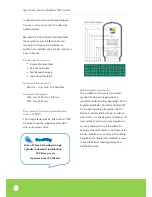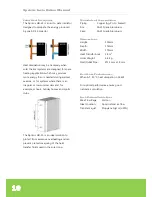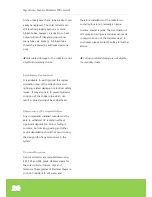
Apricus Installation Manual
14
Sizing the Expansion Vessel
To size an Expansion Vessel for a Solar
Application the following equation can be
used :
(
) (
)
Where
V
EV
= Nominal Expansion Vessel Size [L]
V
SYS
= Total Volume of System [L]
V
SS
= Volume of Safety Water Seal [L]
= 0.005 x V
SYS
or
= 3 Litres
(whichever of above is greater)
β
= Solar Fluid Expansion Coefficient
= 0.13 for CoolSky Fluid
V
COL
= Volume of Collector
= 0.3 Litres for AP-10
= 0.5 Litres for AP-20
= 0.7 Litres for AP-30
n
= Number of Collectors
P
SV
= Pressure Relief Valve Setting
= 6 Bar as CoolSky Standard
P
MAX
= Allowable Max Pressure in Bar
= P
SV
– (0.1 x P
SV
)
= 5.4 Bar (for a 6 Bar PRV)
H
ST
= Static Height of System
= Height of Collector from Pump
PEV = Gas Pressure of Expansion Vessel
= 1 + (0.1 x H
ST
)
CoolSky recommend that an additional
safety factor of 1.5 is applied to the V
EV
value to account for the possibility of steam
in the solar loop.
Examples of typical domestic Expansion Tank
Capacities are given in the table below.
Apricus AP-30 Collector
Aperture
Area
[m
2
]
System
Volume
[Litres]
Static
Head
[m]
Expansion
Tank
[Litres]
3
6.9
5
18
10
18
6
7.6
5
18
10
18
9
8.3
5
18
10
18
12
9.0
5
18
10
24
The above are based upon a system using
the Apricus AP-30 Collector with 20 meters
of DN16 Flexible S/S Pipework and a Heat
Exchanger with 2 litre capacity.
The CoolSky Technical Design Team can
provide assistance and support for the sizing
of Solar Expansion Vessels for your
installation if required.





























